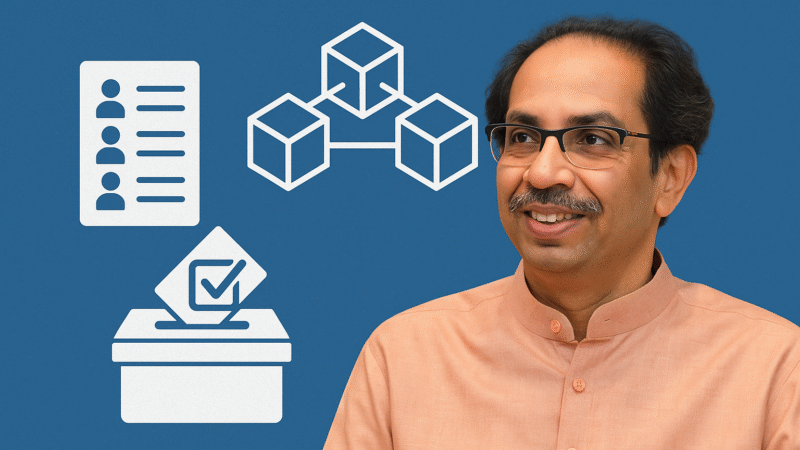Building The Future Of Layer-1 Blockchain: Insights From Steve Durbin, CEO & Co-Founder Of RYT.io
Introduction
Blockchain technology has seen rapid advancements since its inception, evolving from its original use case in cryptocurrencies to a broad range of applications in various industries. Among the many innovations in blockchain, Layer-1 blockchain has emerged as a foundational pillar that promises scalability, security, and efficiency in decentralized systems.
In a conversation with Steve Durbin, the CEO and Co-Founder of RYT.io, we gain valuable insights into the future of Layer-1 blockchain technology and RYT.io’s role in shaping this future. Layer-1 blockchains refer to the base layer of the blockchain architecture, which includes the core protocols and rules that govern the decentralized network. Unlike Layer-2 solutions that operate on top of existing blockchains to enhance scalability, Layer-1 blockchains are responsible for handling the consensus mechanism, validating transactions, and ensuring the security of the entire blockchain ecosystem.
Understanding The Significance Of Layer-1 Blockchain
What is Layer-1 Blockchain?
Before delving into RYT.io’s contributions, it’s essential to understand what Layer-1 blockchain means in the context of blockchain technology. A Layer-1 blockchain is the fundamental blockchain network that operates independently and is responsible for validating transactions, creating consensus, and securing the entire ecosystem. Well-known Layer-1 blockchains include Bitcoin, Ethereum, and Solana.
The primary function of Layer-1 is to provide the base layer that other applications and services build upon. It ensures that decentralized applications (dApps), smart contracts, and other blockchain projects can interact with each other on a secure, transparent, and immutable platform.
However, while Layer-1 blockchains are foundational to the entire ecosystem, they often face challenges such as:
Scalability: Layer-1 blockchains struggle with processing a large number of transactions per second (TPS), making it difficult to handle high-volume applications.
Security: Ensuring the network is secure while maintaining decentralization is a complex challenge for Layer-1 blockchains.
Interoperability: Many Layer-1 solutions operate in silos, making it challenging for them to communicate and exchange data with other blockchains.
These challenges have prompted the development of various solutions, including Layer-2 scaling solutions (such as the Lightning Network for Bitcoin) that aim to improve scalability while maintaining the core principles of Layer-1.
The Role of RYT.io in Shaping the Future
RYT.io is a pioneering company that is addressing these challenges head-on with its innovative approach to Layer-1 blockchain technology. According to Steve Durbin, the future of Layer-1 blockchain lies in improving scalability, enhancing security, and making blockchain technology more accessible and user-friendly. RYT.io’s approach is designed to tackle the current limitations of existing Layer-1 solutions while providing a robust foundation for the next wave of decentralized applications.
Steve Durbin’s Vision For The Future Of Layer-1 Blockchain
A New Era of Scalable Blockchain Solutions
One of the key challenges in blockchain technology is scalability. As blockchain networks grow in size and complexity, they often struggle with slow transaction processing and high fees, which can hinder widespread adoption. Layer-1 blockchains, in particular, face the challenge of balancing decentralization with scalability.
Steve Durbin envisions RYT.io as a solution to these scalability challenges. By introducing new consensus mechanisms and optimizing network architecture, RYT.io aims to significantly increase transaction throughput while keeping fees low. The platform is designed to support high-volume applications without sacrificing security or decentralization.
Durbin’s vision includes multi-layered scalability, meaning RYT.io’s Layer-1 solution will not only handle increased transaction volume efficiently but also integrate seamlessly with Layer-2 solutions to further enhance scalability. This hybrid approach will help RYT.io scale to accommodate growing demand without compromising the core principles of blockchain technology.
Fostering Interoperability Between Blockchain Networks
Interoperability has been another persistent issue in the blockchain space. The lack of seamless communication between different blockchain networks limits the potential for innovation and reduces the effectiveness of decentralized ecosystems. Durbin sees interoperability as a cornerstone of RYT.io’s future.
Through the development of cross-chain protocols and standards, RYT.io aims to ensure that different Layer-1 blockchains can communicate with each other efficiently. This will open the door for decentralized finance (DeFi), non-fungible tokens (NFTs), and other blockchain-based applications to function across multiple ecosystems.
In a world where data privacy and user control are becoming increasingly important, Durbin also envisions RYT.io creating privacy-preserving solutions that allow users to maintain control over their data without sacrificing the benefits of decentralization. By fostering greater interoperability between blockchain networks, RYT.io aims to contribute to a more connected and robust decentralized world.
Challenges And Opportunities In Layer-1 Blockchain Development
Security and Decentralization
Maintaining security and decentralization is paramount in the development of Layer-1 blockchain networks. RYT.io faces the challenge of building a network that is not only secure but also resistant to centralization. According to Durbin, blockchain security should never be compromised for the sake of scalability.
RYT.io utilizes advanced cryptographic techniques and innovative consensus algorithms to ensure that the blockchain remains secure, decentralized, and transparent. Unlike traditional blockchain networks that rely on energy-intensive proof-of-work (PoW) algorithms, RYT.io has opted for a more efficient proof-of-stake (PoS) model that reduces energy consumption while maintaining a high level of security.
Furthermore, distributed ledger technology (DLT), a core feature of Layer-1 blockchain, is designed to prevent centralized control and ensure that all participants in the network have equal access to the system. RYT.io’s emphasis on decentralization ensures that no single entity has control over the network, providing true decentralization to its users.
Building Ecosystem Support
While blockchain technology is innovative, its adoption has been slow in many sectors due to the complexity of using decentralized networks. Durbin is focused on making blockchain technology more accessible to developers and users alike. RYT.io is designed with a user-friendly interface and developer tools that simplify the process of building decentralized applications.
To accelerate the adoption of blockchain, RYT.io also aims to collaborate with established companies and organizations in various industries to integrate blockchain solutions into existing infrastructure. By building a comprehensive ecosystem of partners, RYT.io hopes to catalyze the widespread adoption of decentralized technologies across industries such as finance, supply chain, and healthcare.
The Long-Term Potential Of RYT.io And Layer-1 Blockchain
Transforming Industries with Blockchain
As blockchain technology continues to evolve, the potential applications of Layer-1 blockchains expand significantly. From decentralized finance (DeFi) to digital identity management, smart cities, and supply chain transparency, blockchain has the ability to disrupt various sectors. RYT.io is positioning itself to be at the forefront of these transformations.
Through its innovations in Layer-1 blockchain, RYT.io will facilitate a new wave of decentralized applications (dApps) that can operate efficiently, securely, and at scale. Durbin believes that blockchain’s potential to reduce inefficiencies, increase transparency, and enhance security will drive its adoption across industries, fundamentally changing how businesses operate and interact with consumers.
Creating a Sustainable Blockchain Ecosystem
Durbin also envisions a sustainable future for blockchain technology, where energy consumption is minimized, and the environmental impact of blockchain networks is reduced. RYT.io’s commitment to sustainable development is reflected in its adoption of energy-efficient consensus mechanisms and blockchain protocols that aim to lower the carbon footprint of its operations.
As blockchain adoption continues to grow, RYT.io’s long-term strategy focuses on building a sustainable and scalable ecosystem that can support future innovation without compromising environmental or social responsibilities.
Conclusion
The future of Layer-1 blockchain technology is incredibly bright, and RYT.io is poised to play a significant role in shaping that future. With its focus on scalability, interoperability, security, and sustainability, RYT.io aims to overcome the challenges that have historically limited the growth of blockchain technology.
Under the leadership of Steve Durbin, RYT.io is not only addressing the current limitations of Layer-1 blockchains but is also laying the groundwork for a more decentralized, efficient, and accessible blockchain ecosystem. As blockchain adoption grows, RYT.io’s vision for the future will help redefine the way businesses and individuals interact with decentralized networks.



